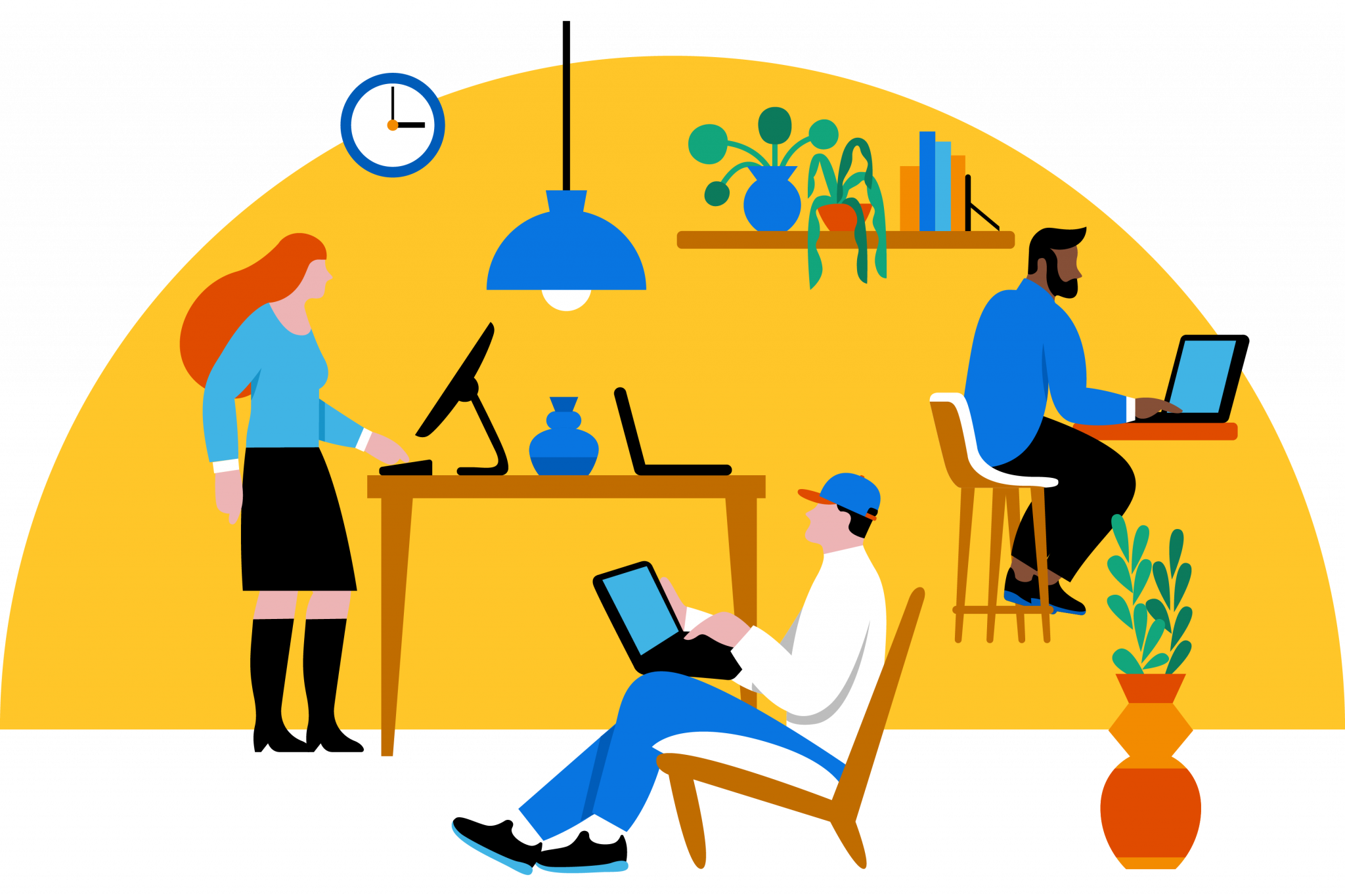
Excerpt: People have been working from home for more than a year since the start of COVID-19. However, now that vaccines and COVID are under control, offices and businesses are reopening, causing many to be anxious about returning to work. Most employees are looking for solutions to regulate and calm their tension in such a situation. So, how do we go about doing it? We have curated a few things that might help you. It’s not an exclusive list yet might be helpful.
Read Time: 5 mins 4 secs
Miscellaneous
With the COVID-19 onset, people have been working from home for more than a year now. But with vaccines and COVID in control now, offices and workplaces are opening, which is causing anxiety among the people to return to their work. In such a situation, most of the employees are looking for ways to manage and calm their anxiety. So, how do we do it?

Here are a few things that might help you:
Humans are known to be social animals. Hence their neurobiology is influenced by their relationships with others around them. To simplify, increased volume in the amygdala, a brain region that encodes salient information in the environment, and the hippocampus, a region important for learning and memory, as well as greater cortical thickness in the prefrontal cortex, a region important in decision making and social behaviour, are all linked to increased social interaction. This widespread network of brain regions enables us to learn about and recognise emotional cues in others, allowing us to navigate our social world more efficiently. Hence, increased isolation and loneliness, in the absence of the social interaction that our brain expects, can lead to an increased risk of cognitive decline as well as mental health consequences such as depression, which affects vulnerable members of the population disproportionately, such as children, the elderly, and those with underlying mental health issues.
What this means for returning to work is that we may have grown accustomed to interacting with fewer people and turning inwards, so returning to meetings, classes, and in-person social events can be overwhelming at first and cause anxiety, especially if we have not fully exercised our social skills in over a year. So the first point is that it’s crucial to be nice to ourselves as we take this next step and to keep in mind that others may be encountering similar difficulties. As we jointly struggle to physically return to social life, we should see this as an opportunity to be more sympathetic and caring.
Another thing we would like you to know is anxiety is a feeling of unpredictability and uncertainty about a distant, potentially undesirable outcome. It has a longer duration than fear, is more future-oriented than present-oriented fear, and has fewer elicitors and terminators. Rather than retreating or fleeing, one seeks to address the threat. One makes an effort to gather information and explore options. One method is to conduct a continuous visual check of one’s surroundings for potential hazards.
If coping methods fail and the fear is not addressed, it might develop into anxiety. Fear, on the other hand, does not have to precede anxiety. Anxiety can also be caused by rumination.
People are recovering from a pandemic in which the infection not only caused the illness but also killed many people. Its replication and variations are unknown at this time. Right now, they and their loved ones’ safety is still in jeopardy. This, along with the fact that not everyone has decided to get vaccinated, means that herd immunity may not be attained anytime soon, increasing the unpredictability of the virus’s impact on individual lives. As a result, this is a factor that people must cope with, and it contributes to their worry.
On top of the health and safety concern, there are other factors of anxiousness to consider. When I get back, what will my job be like? Is it going to be more focused in the long run? Do I have the tools and abilities to adapt to new ways of working if they arise? Is my employment secure enough for me to support myself and my family if I return, or is my company on the verge of bankruptcy? Should I return to the in-person job, will my family be able to look for themselves?
Hence, as people return to work, they are often grappling with personal difficulties that have surfaced during the past year. Do I want to keep doing this? Is it possible for me to pursue an alternative career path? Is my current situation making me happy? Dealing with these problems can also induce anxiety since, if an alternative path is considered, the uncertainty about what the journey would entail is heightened.
Third, since March 2020, a lot has changed. One shift for many of us has been learning to work from home instead of going to an office every day. Although the transition may have been difficult at first, the pandemic’s protracted duration has allowed people to adjust to their new normal, to get comfortable — or at least relatively comfortable — being at home most of the time. As a result, it’s not surprising that many people are worried as they prepare to return to work, returning to routines that were once familiar but are now foreign.
Kate Sweeny’s research on the psychology of stressful uncertainty reveals several ways of managing these anxieties. To begin, consider revising your work clothing, dusting up your daily planner, or seeking up new lunch-on-the-go recipes to gain a sense of control over the unpredictable future. Second, you can seek the positive aspects of returning to work to promote hope and optimism while also calming concern and anxiety. Are there any coworkers you haven’t seen in a while? Are there any old routines that will provide a nice break? Finally, if all else fails, you can choose hard, engaging tasks to occupy your attention — a process known as “flow” — and help you pass the time while you wait for your “old normal” to return.
Many people are experiencing anticipatory anxiety, which occurs when we start to worry about what “could” or “might” happen, and is frequently associated with the worst possible outcome. Remember that, just like with the initial feeling of quarantine, a sense of adjustment will take time. Keep in mind that people will need to make adjustments based on their particular needs. Finally, when you start to feel anxious, think about these things:
- Accepting that you are having an anxiety attack and sitting with it. Practice a few moments of concentrated breathing without being attached to the thought’s story. This can help to shorten the time it takes for you to feel anxious.
- Planning and building what habits you’d like to keep once you return to university, such as calm morning routines, walking, and exercising. Make a list of what has aided your general health and make them non-negotiable.
- Accepting the fact that things will change. Friendships, family, and counselling can all help with the adjustment.
Keep in mind to take things one step at a time. Setting boundaries and being aware of what can assist you in “easing back in” is a great place to start. Also, keep in mind that not all thoughts are true.
May you also like: 12 Challenges Of Online Education For Teachers And Studen
May you also like: 17 Best Online Learning Software And Teaching Platforms
May you also like: 12 challenges in online class during pandemic
TagsComing back to work, Mental Health, Pandemic, Work from office, Workplace







